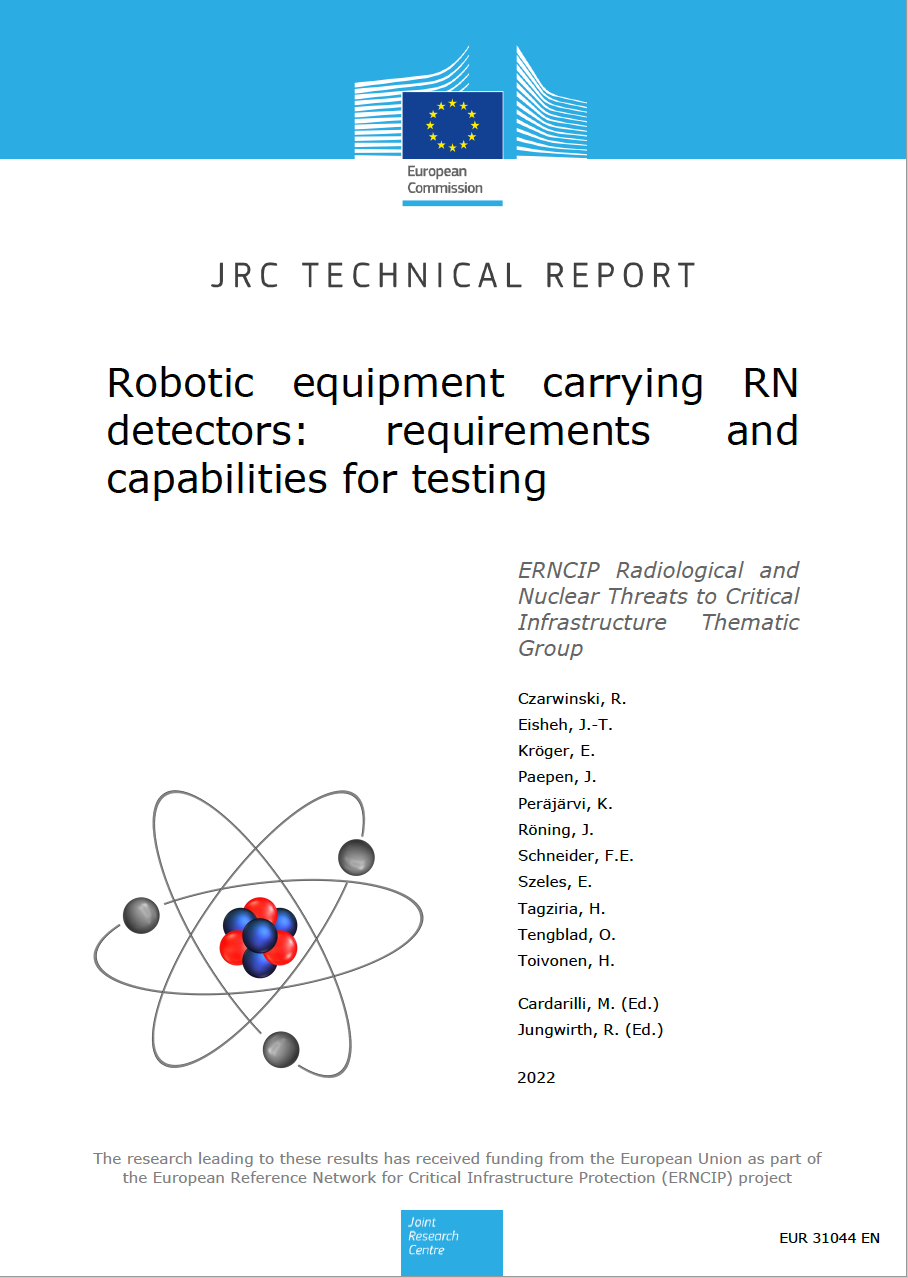Robotic equipment carrying RN detectors: requirements and capabilities for testing

date: 02/07/2022
See also: Website
In the last decade the European Union has faced a range of terrorist threats and CBRNE attacks. In particular, giving the potential threats to critical infrastructure involving RN materials underlines even stronger the significant potential for the use of robots in sampling and measurements in radiological incidents which may have societal consequences and/or cause wide-scale damage to the economy and environment.
This report exploits the ability of robots to carry sensors, especially in areas beyond human access, and boost the operator’s situational awareness and capabilities. This, in turn, is a prerequisite for testing and training, particularly for sophisticated search strategies that can help to map and localise RN agents, but also more broadly to identification, detection, monitoring and manipulation of contaminants across various domains. The use of robotic equipment for radioactive sources leads to maximize information gain and minimize costs, reducing human workload and radiological exposition as well.
To structure the planning and future employment of robots in this context, it is helpful to understand the possible fields and types of application where robots – with different grade of automation and autonomy – could be of use for radiation protection in case of nuclear security events occur, including combination of multiple unmanned systems in air-, land-, sea-based applications and benchmarking. Furthermore, the future possibilities for using robots are assessed as well as improvements and additional needs, potentially expanded to all CBRNE materials.
The role of technical, scientific and operational expert support is analysed through case studies and simulated scenarios for the successful handling of a nuclear security event, including radiological crime scene management.
In particular, this document results from a collection of reports, developed by multiple sub-groups of experts falling into the Radiological and Nuclear Threats to Critical Infrastructures (RN) Thematic Group of the ERNCIP framework.
